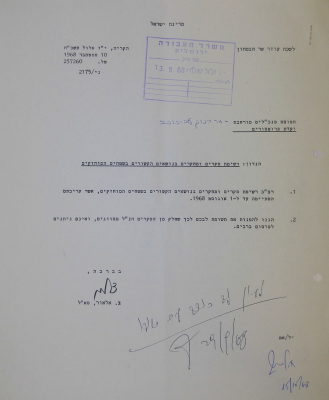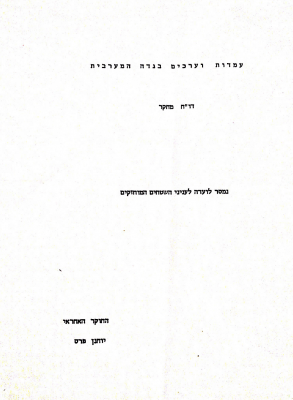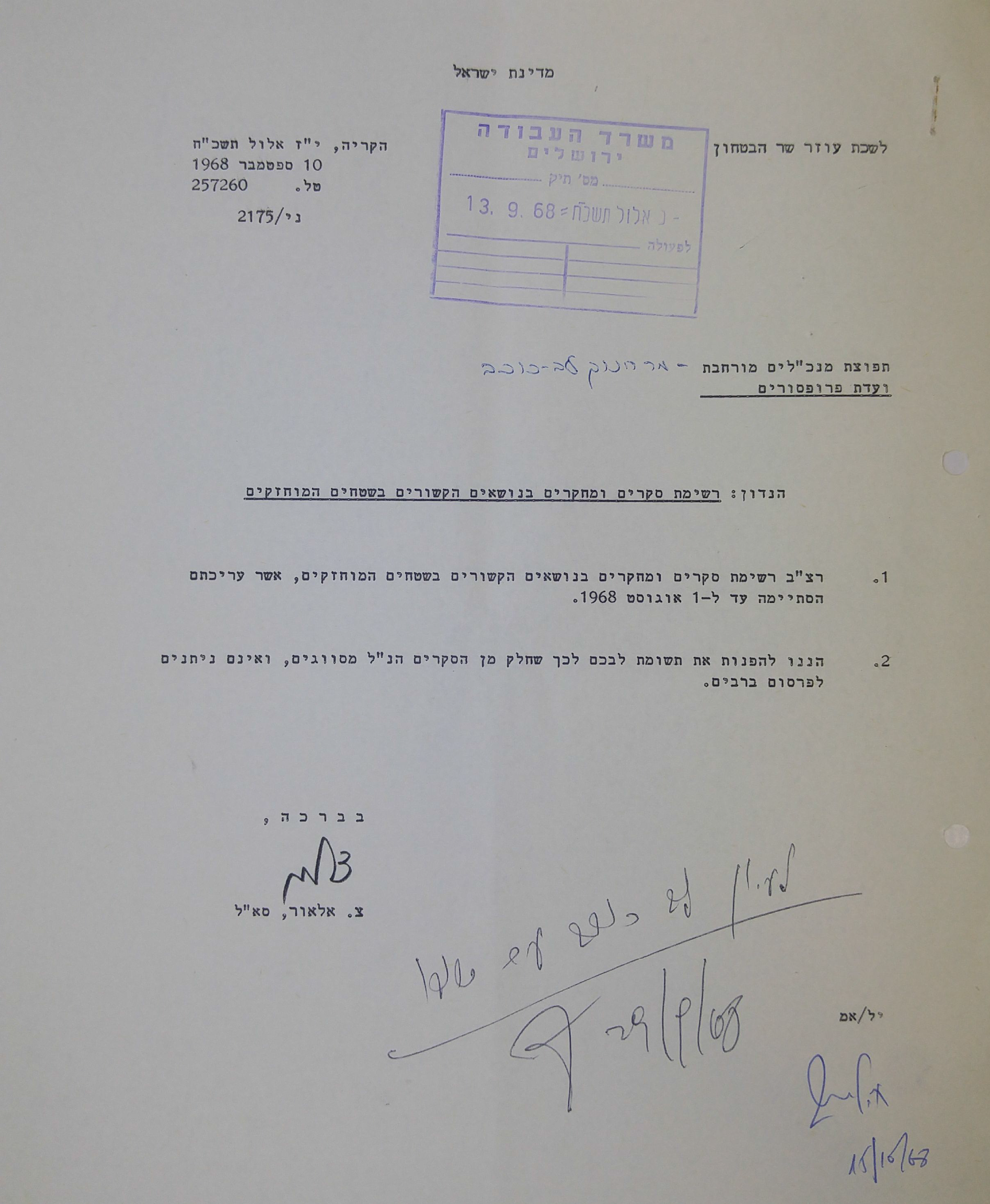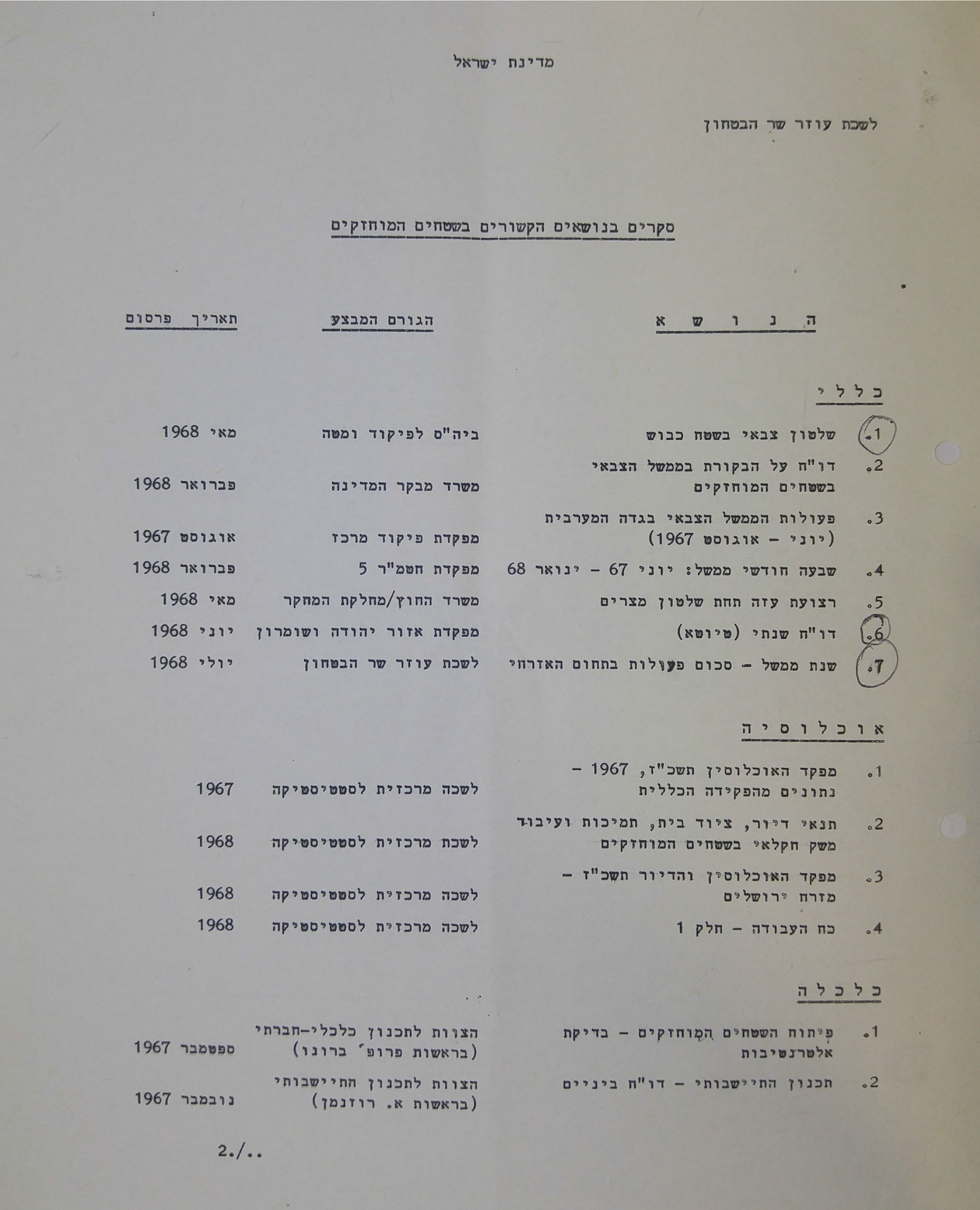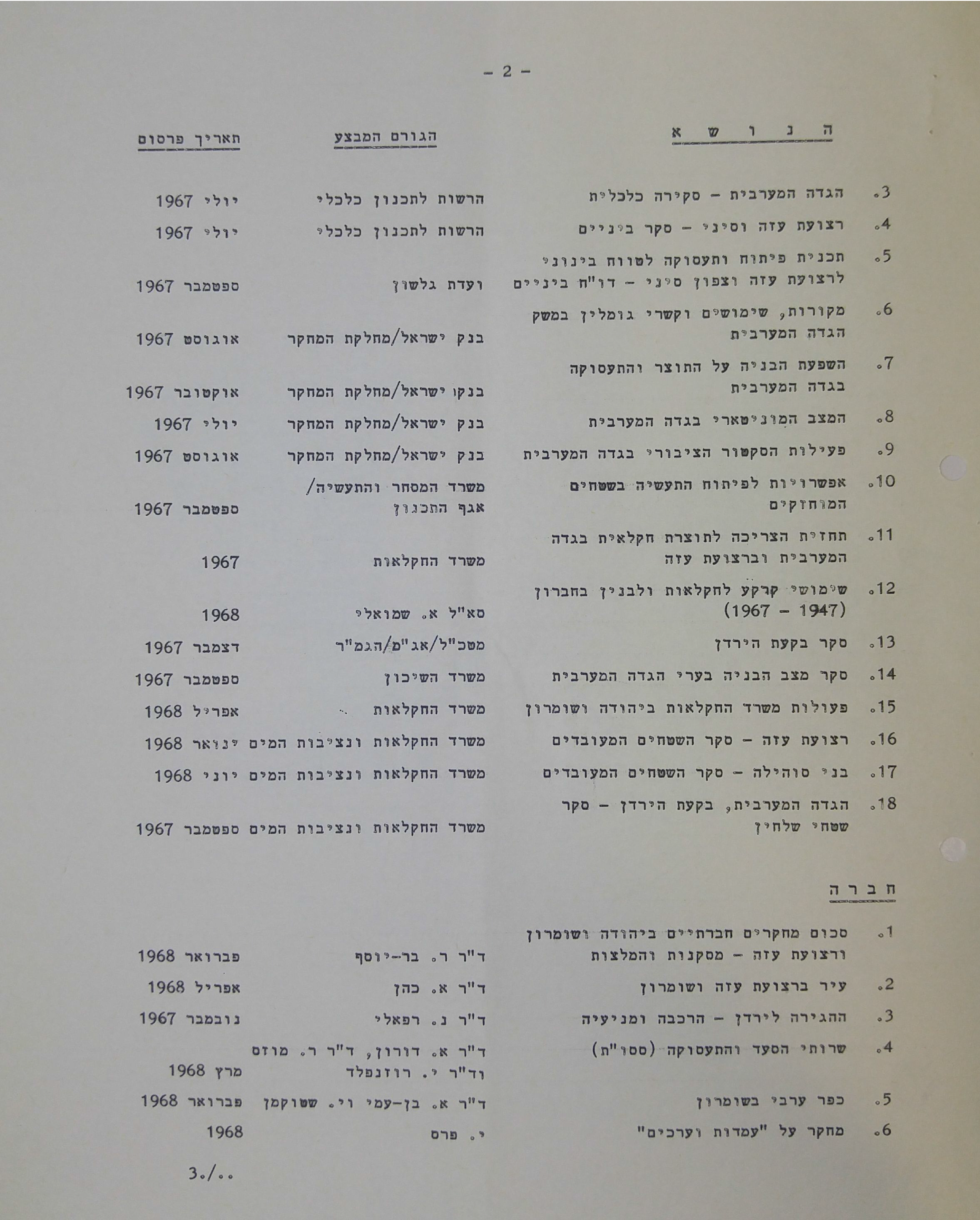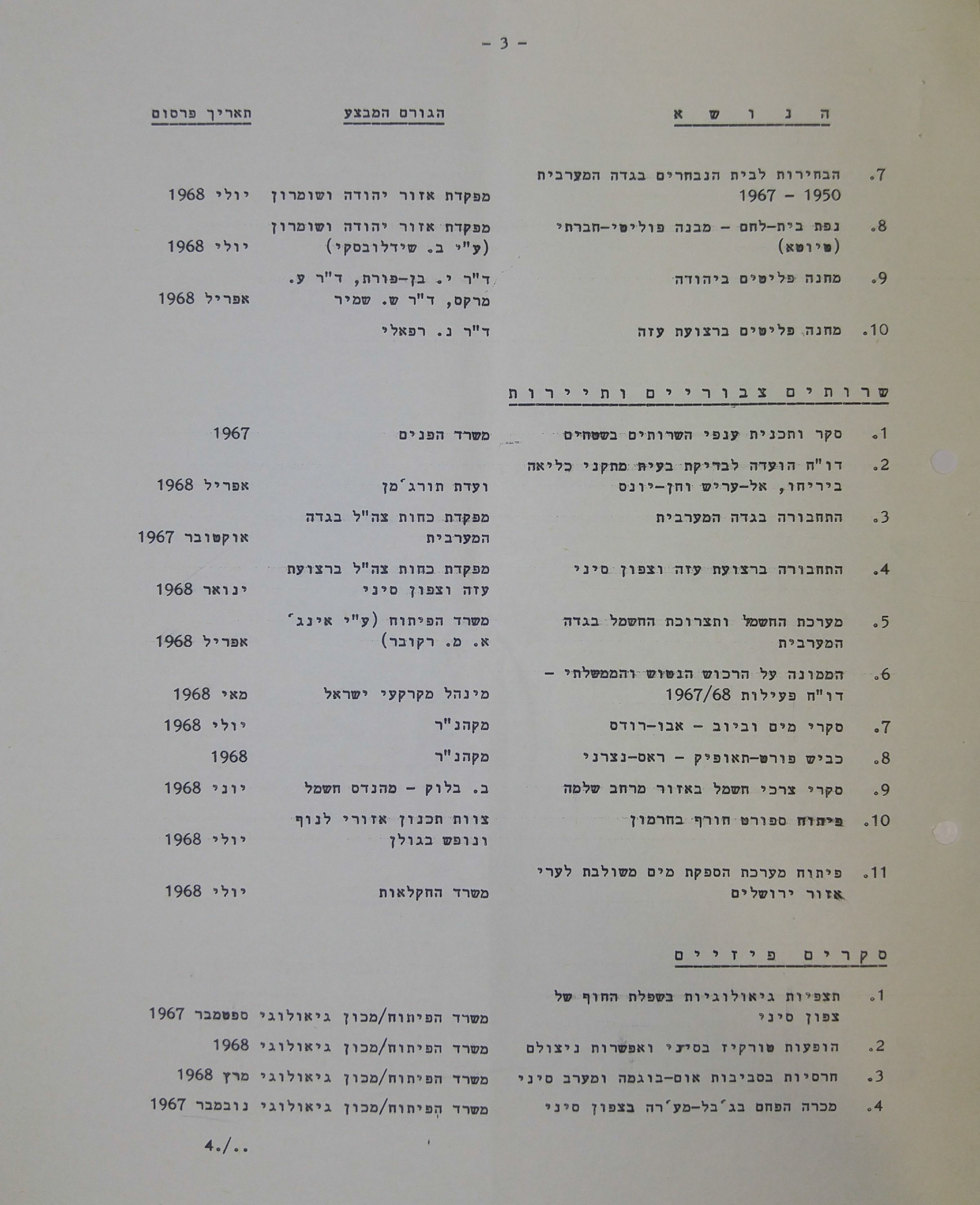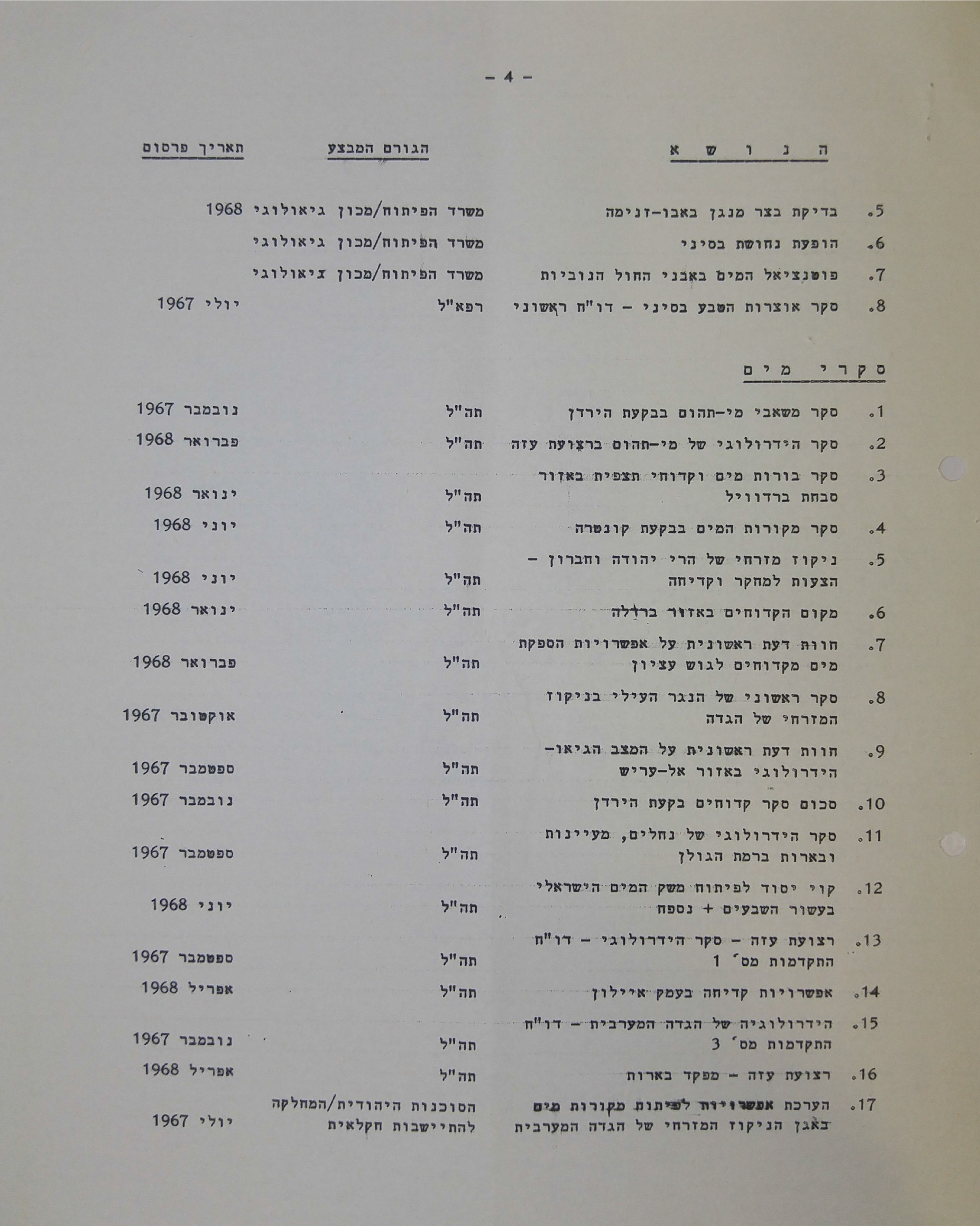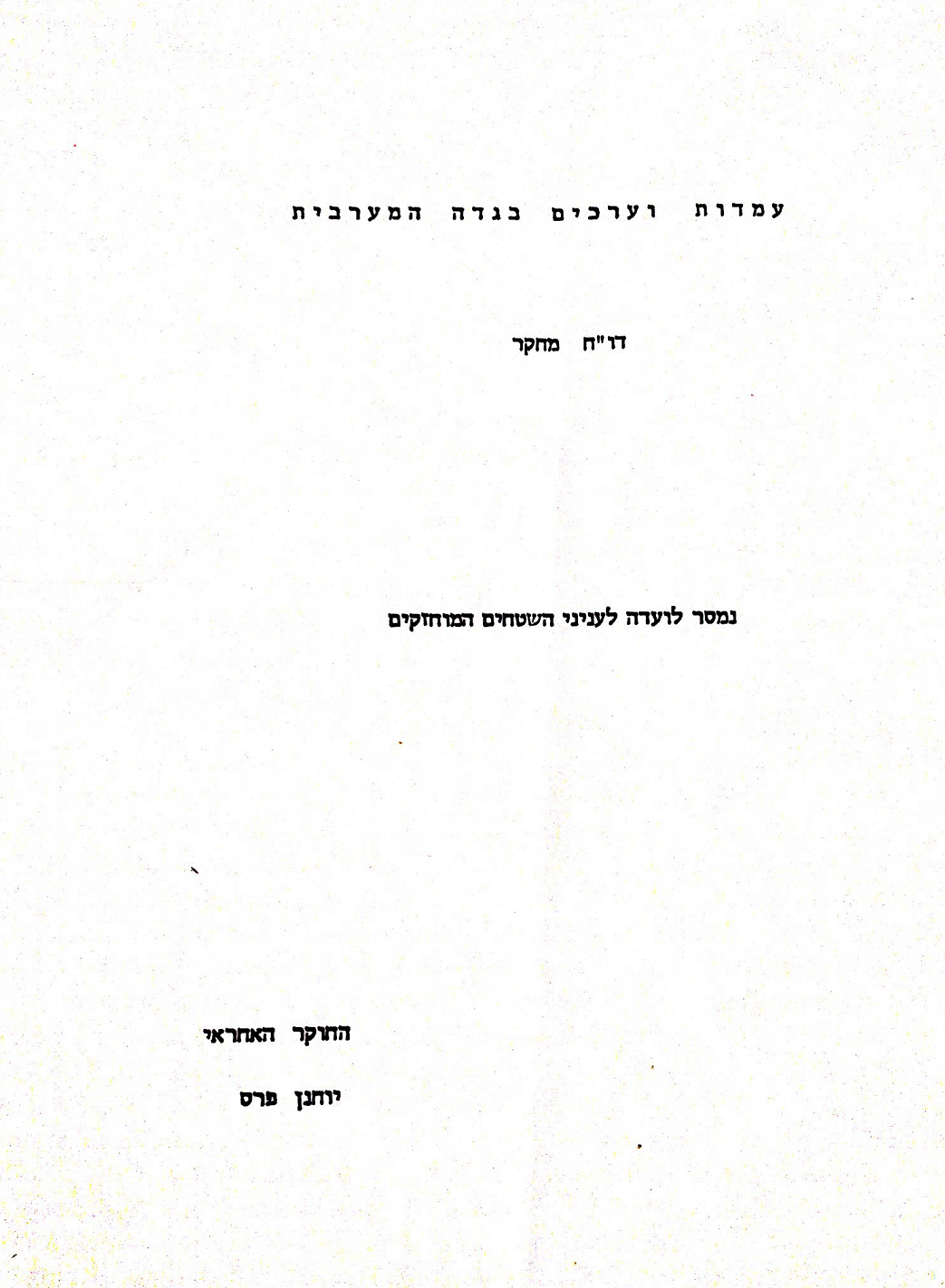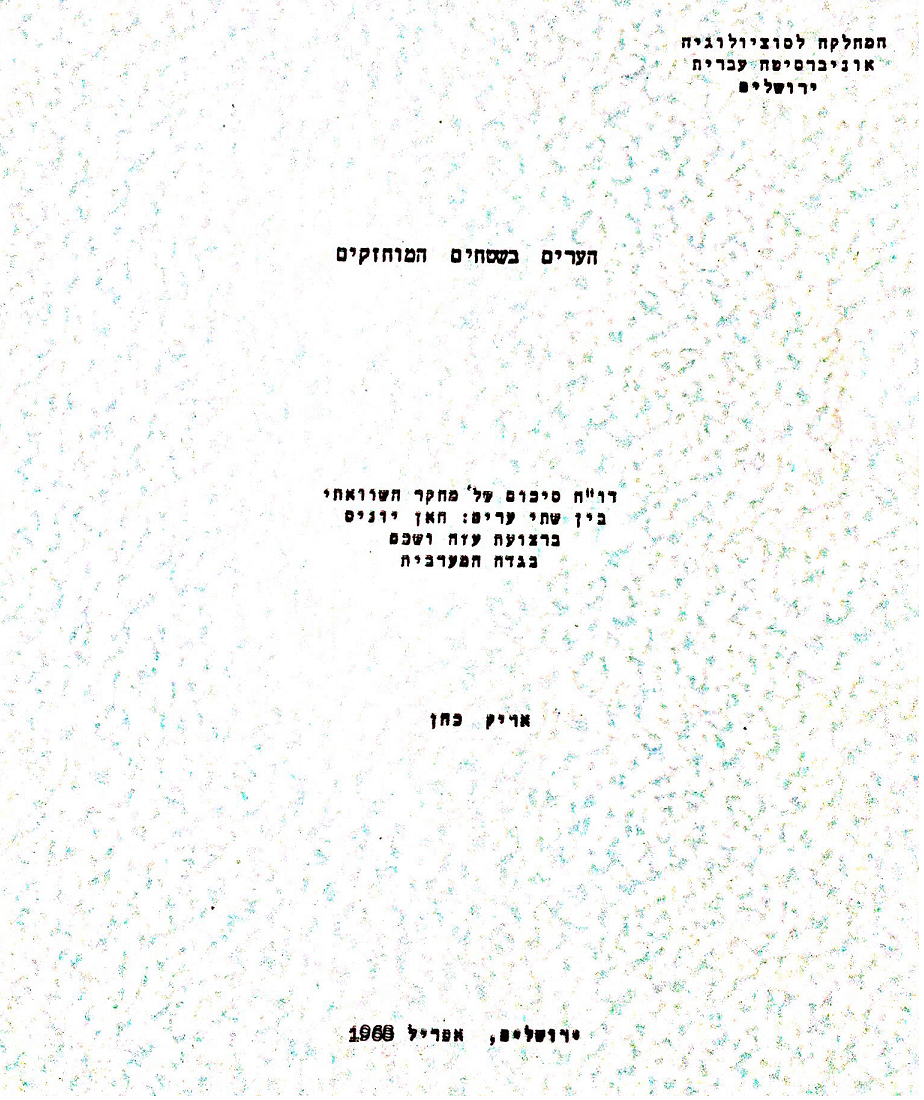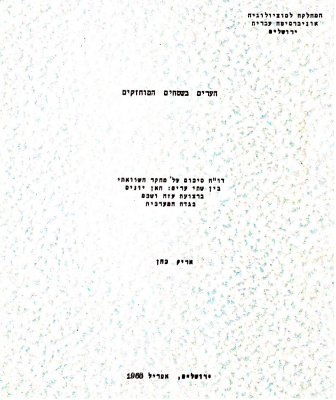During the Occupation’s first year, Israeli government agencies conducted a long list of studies and surveys on the occupied territories, their population and their economy. The titles of these surveys and studies offer a glimpse into the interests of Israeli government in the territories even at this early stage of the occupation. Two of the studies are also available here.
A List of surveys and studies on matters related to the Occupied Territories
In September 1968, the Ministry of Defense compiled a list of 75 completed surveys and studies. These were conducted by various governmental bodies and in some cases by academics. Alongside periodic reports summarizing the work of the different government agencies, research was conducted on a variety of topics, including social affairs (for example, “Immigration to Jordan – composition and reasons”); economic affairs (Land use for agriculture and construction in Hebron, 1947-1967) and surveys on water and natural resources.
עמדות וערכים בגדה המערבית
“We can, therefore, conclude by saying that we have found a structure of nationalist positions the epicenter of which is the refugee problem (or rather, a tendency toward a radical solution to this problem”.
[…]
If there is one strategic element that may influence the entire structure, it is the refugee problem.
An understanding that this problem has been largely solved, even if not precisely in the form required by the nationalist approach, could, in our opinion, undermine the basis unifying the nationalistic approach, and would therefore facilitate altering it.
(p. 47)
The towns of the Occupied Territories
“In this report, we summarize the findings and the more general conclusions of a field study conducted in the latter half of 1967 in two cities in the administered territories: Khan Yunis, in the Gaza Strip and Nablus, in the West Bank. These cities were selected following a wider survey encompassing almost all cities in the administered territories, which was conducted in order to examine the general situation in the cities and the differences between them. The cities that were selected are at the ends of the spectrum. Khan Yunis is one of the less developed cities in the administered territories and Nablus is the most developed of them. It appears that the differences between these two cities could teach us something about social change dynamics in cities in Arab countries, and about 214the different problems different types of cities present to the Israeli administration”.
(p. 1)
